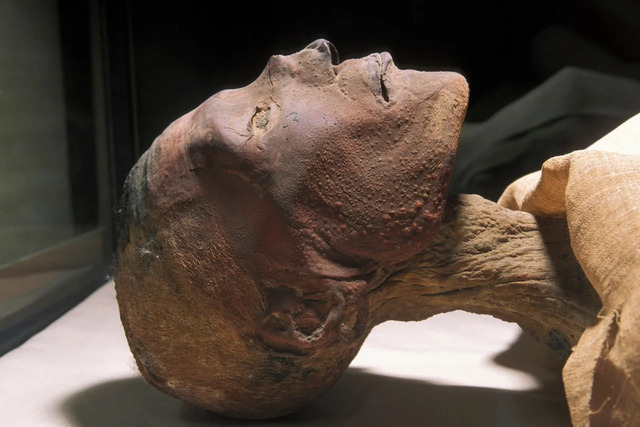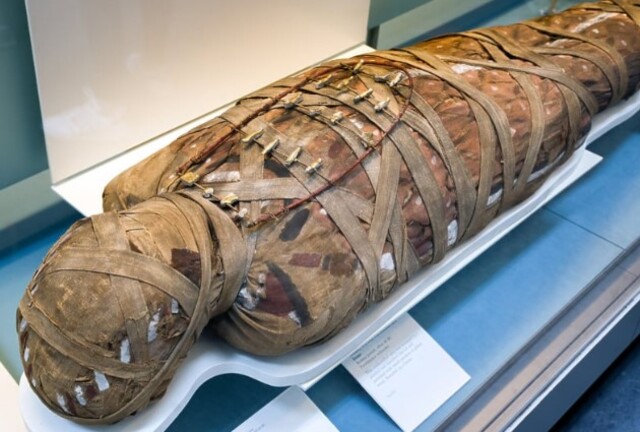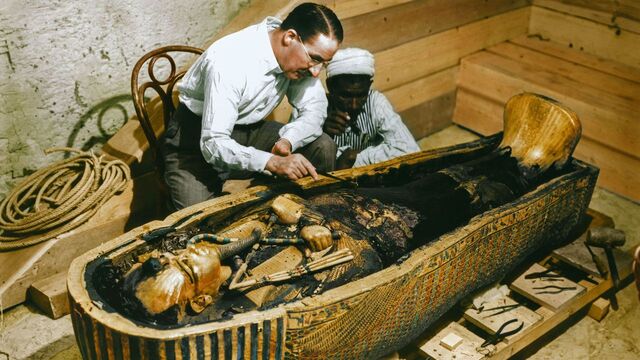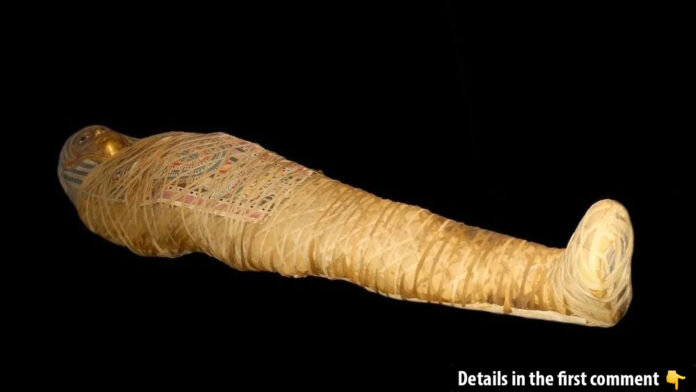For centuries, ancient Egyptian mummies have fascinated historians, archaeologists, and the general public alike. From Hollywood horror films to urban legends, the idea that disturbing a mummy’s tomb could unleash a deadly curse or even a modern plague has become deeply ingrained in popular culture. But is there any scientific basis for these fears? Could bacteria or viruses lurking in ancient mummies pose a genuine threat to humanity today? While the concept is intriguing, modern scientific research suggests otherwise. Let’s explore what the latest findings say about the risks of ancient diseases reawakening in the present day.
Ancient Egyptian Mummies and Infectious Diseases
The ancient Egyptians, like all human civilizations, faced numerous infectious diseases. Scientific analysis of mummified remains has revealed evidence of ailments that were widespread during their time, including smallpox, tuberculosis, and leprosy.
One well-documented case is that of Ramesses V, a pharaoh of Egypt’s 20th Dynasty, whose mummified body exhibits telltale scars characteristic of smallpox. This suggests that smallpox was prevalent in ancient Egypt and could have been a major cause of mortality. Additionally, tuberculosis and leprosy, both bacterial infections, were common and have been detected in ancient skeletal remains.
While these discoveries provide valuable insights into the health of ancient populations, they also raise an important question: If these diseases once afflicted the Egyptians, could they still pose a threat today through their mummified remains?

The Science of Pathogen Survival in Mummies
To answer this question, we must first understand how viruses and bacteria survive over time. Most infectious agents require a living host to reproduce and spread. Without a host, they quickly degrade and become inactive.
According to Piers Mitchell, director of the University of Cambridge’s Ancient Parasites Laboratory, the likelihood of ancient pathogens remaining infectious is extremely low. He explains that “most species of parasites are dead within a year or two” without a living host to sustain them. If a mummy has been buried for thousands of years, the chances of any viable pathogens surviving are virtually nonexistent.
Even viruses such as smallpox, which once spread through direct human contact, cannot remain active for long outside a host. The DNA of ancient pathogens naturally degrades over time, breaking into smaller fragments. Studies have shown that after several centuries, even in ideal preservation conditions, viral and bacterial DNA is too fragmented to function, making infection from ancient remains almost impossible.
Video
Discover the ancient mummification process in Secrets of Ancient Egypt – watch the video to uncover the fascinating techniques and rituals used to preserve the dead in ancient Egypt!
Can Ancient Diseases Resurface?

Although most bacteria and viruses require a living host, certain types of parasitic intestinal worms have a longer survival rate. Unlike viruses or bacteria, some parasites can remain dormant in soil or fecal matter for extended periods. However, even these organisms have limits. Mitchell notes that while some parasites can survive for “months or even a few years,” none have been known to persist for thousands of years.
Furthermore, diseases such as tuberculosis and leprosy require direct human-to-human transmission. Leprosy, for example, spreads only through prolonged contact with an infected individual. The bacteria that cause it, Mycobacterium leprae and Mycobacterium lepromatosis, replicate very slowly, making it highly unlikely that they could remain viable in a mummified body.
Modern scientific research has found no evidence of viable infectious agents in ancient remains. Even when scientists extract ancient DNA from mummies, it is in highly degraded form, making it impossible for the original disease to become active again.
Safety Measures in Mummy Research
While the risk of ancient diseases reawakening is minimal, scientists working with mummified remains still follow strict safety protocols. Protective equipment, such as gloves, masks, and sterilized environments, ensures that researchers do not contaminate the remains or accidentally introduce modern bacteria that could alter their findings.
Additionally, laboratories specializing in ancient DNA analysis use advanced sterilization techniques to ensure that samples remain untainted by contemporary microorganisms. These precautions further minimize any hypothetical risks associated with studying mummies.
Despite these extensive safety measures, there has never been a documented case of a researcher contracting a disease from an ancient mummy.
The Role of Mummies in Modern Science
Although ancient mummies are not a source of modern plagues, they have played a crucial role in advancing medical and historical knowledge. Studying ancient DNA helps researchers trace the evolution of infectious diseases and understand how certain pathogens have changed over millennia.
For instance, genetic analysis of ancient tuberculosis bacteria found in Egyptian mummies has helped scientists map the historical spread of the disease across different civilizations. Similarly, studying ancient parasites provides insights into historical diets, hygiene practices, and migration patterns of early human societies.
Beyond medicine, mummies serve as time capsules, preserving details about ancient Egyptian culture, religious beliefs, and burial practices. Each mummy is a window into the past, helping historians reconstruct the daily lives of people who lived thousands of years ago.
Myths vs. Reality: The Mummy’s Curse and Public Fears
One of the biggest reasons people fear mummies is due to popular culture and media portrayals. Films like The Mummy (1999) have reinforced the myth that disturbing a tomb can unleash a deadly curse or resurrect an ancient plague.
The most famous case of this superstition is the so-called “Curse of the Pharaohs,” which emerged after the discovery of King Tutankhamun’s tomb in 1922. Several members of the excavation team died under mysterious circumstances, leading to speculation that they had been victims of an ancient curse. In reality, these deaths were due to natural causesand unrelated illnesses, not a supernatural force.
Similarly, there is no historical or scientific evidence to suggest that ancient mummies harbor deadly plagues. The idea of a mummy “unleashing a pandemic” belongs in fiction rather than fact.

Conclusion
The fear that ancient Egyptian mummies could trigger a modern plague is rooted in myths rather than scientific reality. While ancient Egyptians did suffer from infectious diseases such as smallpox, tuberculosis, and leprosy, no viable pathogens remain in their mummified bodies today.
Scientific research confirms that viruses and bacteria degrade over time, making it impossible for them to re-emerge after thousands of years. Additionally, strict safety protocols ensure that researchers handling mummies are well-protected.
Far from being dangerous, mummies are valuable scientific and historical resources, offering insight into ancient diseases, human evolution, and cultural practices. Instead of fearing mummies, we should appreciate them as remarkable windows into the past—preserved not to spread disease, but to enrich our understanding of history.
